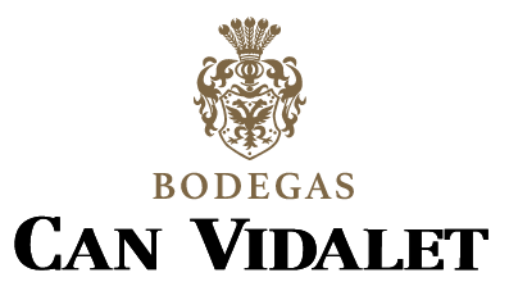When it comes to wine, some prefer the vibrant freshness of a well-chilled dry white. Others are won over by the intensity and body of an aged red. But the truth is, there's no single or correct way to enjoy wine. All you need is a thorough understanding of its characteristics and a clear understanding of the difference between white and red wine. And it's not just about colors.
In this article, we provide you with a clear, accessible guide filled with real information so you can choose with taste... and knowledge. Because both red and white wines have their magic, their history, and, if they're from Bodegas Can Vidalet, their Mallorcan soul.
Type of grape used
One of the primary differences is the type of grape used to make each wine. Red wines are made from red grapes, which contain natural pigments (anthocyanins) in the skin. White wine, on the other hand, is made from white or red grapes without skin contact.
Yes, white wine can be made from red grapes, as long as the skins are quickly separated after pressing. For example, at Can Vidalet, Blanc de Negres is a white wine made from red grapes, and it is a delicious proof of this technique.
Color
The color of the wine is, without a doubt, the most obvious difference. Red wine has shades ranging from cherry red to dark garnet, while white wine can range from pale yellow to bright gold.
This difference is due to the contact of the must with the grape skin during fermentation. In Mallorca's white wine, this contact is avoided, resulting in a clearer and lighter liquid.
Additionally, over time, white wine tends to darken, and red wine tends to turn more brown. So, color is also an indicator of aging.

Taste
Let's talk about the palate now. Here, the difference between white and red wine becomes more sensory. White wine tends to have fresher, citrus, floral, or fruity flavors (pineapple, apple, lime) with higher acidity. Red wine, on the other hand, offers more intense and complex flavors, ripe red or black fruits, spices, leather, or smoky notes if it has been aged in barrels.
Additionally, tannins (those substances that give a dry or astringent sensation) are present in red wines and almost absent in white wines. So, if you're looking for a light, vibrant, and easy-to-drink wine, white wine will win your heart. And if you prefer depth and structure, red wine will be your ideal companion.
Calories
In terms of energy content, white wine generally has fewer calories than red wine. This is because their alcohol and residual sugar content is usually lower.
Let's take a look at the average calorie content of a glass of red and white wine:
- Dry white wine (12% vol.): 100 to 120 kcal per glass.
- Red wine (13 or 14.5% vol.): 125 to 165 kcal per glass.
So, if you're watching your calorie intake or prefer lighter drinks, white is a great option. And at this point, we recommend the white wine from Mallorca, from Bodegas Can Vidalet.
Pairing
One of the most practical reasons for knowing the difference between white and red wine is to know how to pair them at the table. Let's take a look:
- White wine: It pairs well with fish, seafood, salads, soft cheeses, and spicy dishes like Thai or Indian food. At Can Vidalet, wines like Blanc de Blanca or Ses Pedres shine with fresh, summery dishes.
- Red wine: It pairs well with red meats, cured meats, aged cheeses, mushrooms, hearty dishes, and recipes with rich sauces.
However, the best pairing is the one you like best.
Alcohol content:
The alcohol content also makes a significant difference. Red wine typically has a higher alcohol concentration than white wine.
- White wine: Between 11% and 13.5% vol.
- Red wine: Between 13% and 15% vol. (in some cases, more).
This depends on the type of grape, the ripeness at the time of harvest, and the winemaker's decisions during fermentation.
For example, at Can Vidalet, our white wines range from 12% to 13.5%, making them a balanced and versatile option.

Sugar levels
Which wine has less sugar, white or red? The answer is... it depends. If both are dry, meaning they have undergone complete fermentation, the sugar content is very similar: less than 4 grams per liter.
In general, dry wines (both white and red) have less than 4 g/L of sugar, and are almost equal. However, sweet whites (such as Moscatel or Riesling) often exceed 30 g/L, while sweet reds (such as Port) are less common. If you're looking for a wine with less sugar, choose a dry white, Brut Nature, or young dry red.
Type of glass in which it is served
Although it may seem like a minor detail, the type of glass does matter. And a lot.
- Red and white wine glasses are differentiated by their shape. The red has a wider and rounder shape, which allows for better oxygenation and expression of complex aromas.
- The white one is narrower and longer, to better maintain the temperature and direct the more subtle aromas towards the nose.
Using the right glass enhances the experience and allows each wine to express itself as it was intended in the winery.
And then… Which one do you prefer?
Don't get it wrong, it's not about choosing the best wine, but about letting your senses guide you, and knowing when you want one and when you want the other. That's the big advantage of knowing the difference between white and red wine.
At Bodegas Can Vidalet, we are proud to offer the best white wine from Mallorca, with character, complex but accessible, artisanal and deeply connected to our land in Pollença, Mallorca.
If you're looking for a unique experience, full of nuances and Mediterranean soul, we invite you to discover our white wine collection and bring the essence of our winery to your glass.

